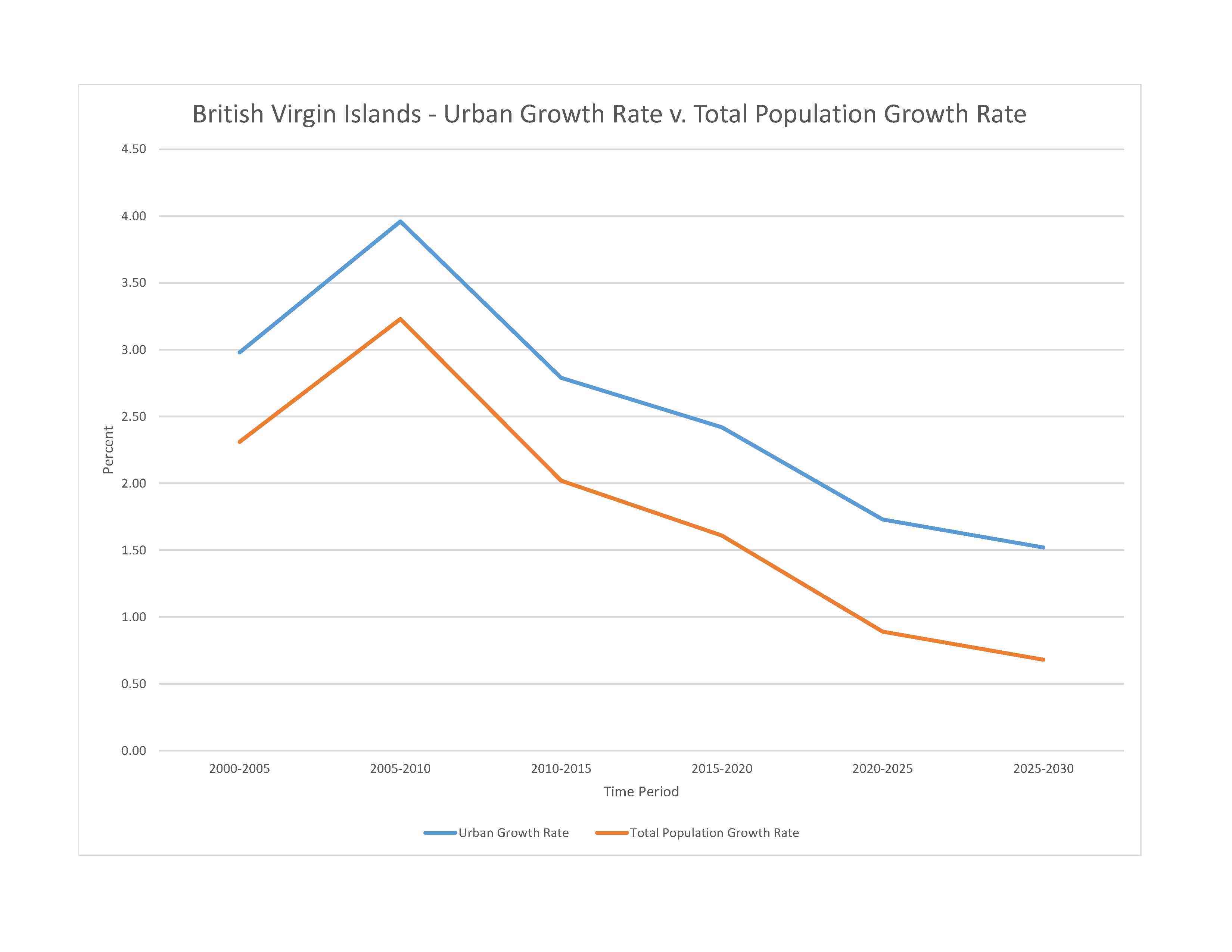
39,369 (2023 est.)
noun: British Virgin Islander(s)
adjective: British Virgin Islander
African/Black 76.3%, Latino 5.5%, White 5.4%, mixed 5.3%, Indian 2.1%, East Indian 1.6%, other 3%, unspecified 0.8% (2010 est.)
English (official), Virgin Islands Creole
Protestant 70.2% (Methodist 17.6%, Church of God 10.4%, Anglican 9.5%, Seventh Day Adventist 9.0%, Pentecostal 8.2%, Baptist 7.4%, New Testament Church of God 6.9%, other Protestant 1.2%), Roman Catholic 8.9%, Jehovah's Witness 2.5%, Hindu 1.9%, other 6.2%, none 7.9%, unspecified 2.4% (2010 est.)
0-14 years: 16.56% (male 3,231/female 3,287)
15-64 years: 71.87% (male 13,322/female 14,972)
65 years and over: 11.58% (2023 est.) (male 2,156/female 2,401)
total dependency ratio: 32.8
youth dependency ratio: 20.2
elderly dependency ratio: 12.6
potential support ratio: 8 (2021)
total: 38.2 years (2023 est.)
male: 37.9 years
female: 38.6 years
1.87% (2023 est.)
10.9 births/1,000 population (2023 est.)
5.4 deaths/1,000 population (2023 est.)
13.2 migrant(s)/1,000 population (2023 est.)
a fairly even distribution throughout the inhabited islands, with the largest islands of Tortola, Anegada, Virgin Gorda, and Jost Van Dyke having the largest populations
urban population: 49.7% of total population (2023)
rate of urbanization: 1.73% annual rate of change (2020-25 est.)

15,000 ROAD TOWN (capital) (2018)
at birth: 1.05 male(s)/female
0-14 years: 0.98 male(s)/female
15-64 years: 0.89 male(s)/female
65 years and over: 0.9 male(s)/female
total population: 0.91 male(s)/female (2023 est.)
total: 13.8 deaths/1,000 live births (2023 est.)
male: 16.4 deaths/1,000 live births
female: 11 deaths/1,000 live births
total population: 79.9 years (2023 est.)
male: 78.4 years
female: 81.5 years
1.37 children born/woman (2023 est.)
0.67 (2023 est.)
N/A
improved: total: 99.9% of population
unimproved: total: 0.1% of population (2020 est.)
N/A
N/A
improved: urban: 97.5% of population
rural: 97.5% of population
total: 97.5% of population
unimproved: urban: 2.5% of population
rural: 2.5% of population
total: 2.5% of population (2015 est.)
N/A
46.6% (2023 est.)
2.6% of GDP (2020 est.)
total population: NA
male: NA
female: NA
total: 12 years
male: 12 years
female: 12 years (2018)
NOTE: The information regarding British Virgin Islands on this page is re-published from the 2024 World Fact Book of the United States Central Intelligence Agency and other sources. No claims are made regarding the accuracy of British Virgin Islands 2024 information contained here. All suggestions for corrections of any errors about British Virgin Islands 2024 should be addressed to the CIA or the source cited on each page.
This page was last modified 04 May 24, Copyright © 2024 ITA all rights reserved.